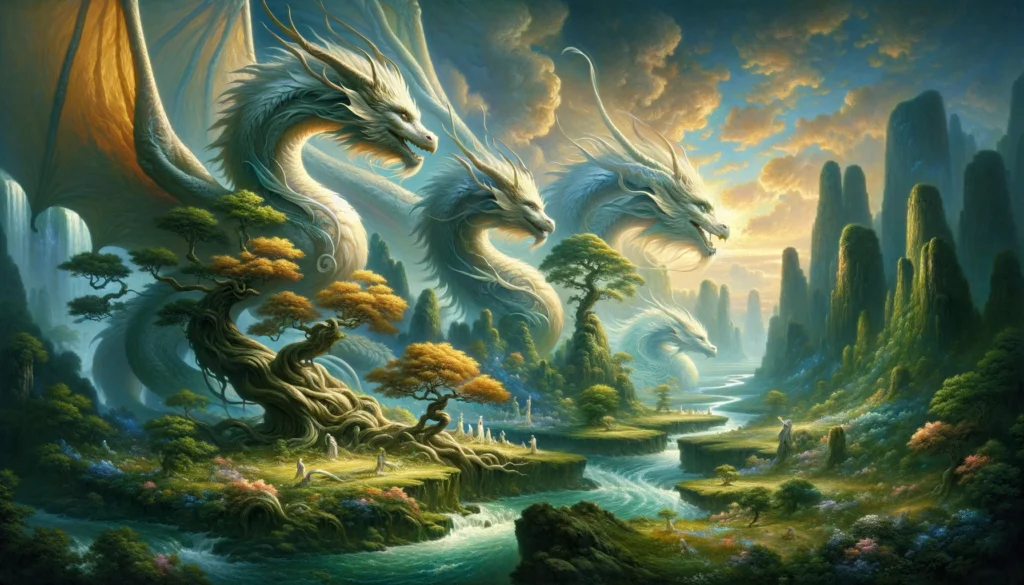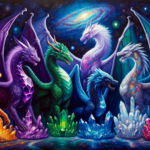Benevolent Dragons – an Introduction
Dragons, mythical creatures of immense power and majesty, have often been cast in the role of menacing adversaries in folklore and literature. However, it’s time to explore a different perspective, one that celebrates dragons as symbols of goodness, wisdom, and protectors of the world. In various cultures and tales, benevolent dragons have embodied positive qualities and played vital roles in promoting harmony and well-being.
The Wisdom of Dragons
One of the most common traits associated with benevolent dragons is their wisdom. In many stories, dragons are portrayed as ancient beings with unparalleled knowledge. They often serve as mentors and guides to heroes on quests for self-discovery and enlightenment. These wise dragons offer valuable advice, share ancient teachings, and help individuals unlock their potential.
For instance, in the famous fantasy novel “Eragon” by Christopher Paolini, the dragon Saphira becomes not only the loyal companion of the protagonist but also a source of profound wisdom and guidance. Saphira’s wisdom goes beyond mere physical prowess, emphasising the importance of empathy, compassion, and ethical decision-making.
Protectors of the Natural World
Dragons have frequently been depicted as guardians of the natural world. In various cultures, they are seen as protectors of forests, rivers, and mountains. This representation highlights the dragons’ connection to the environment and their role in maintaining the delicate balance of nature.
In Native American mythology, the Thunderbird, often likened to a dragon, is considered a guardian spirit of the skies and a protector of the Earth. Its role is to bring rain and ensure the fertility of the land, emphasising the positive influence of these creatures on the environment.

Benevolent Dragons as Defenders of Humanity
While dragons may be formidable, their benevolence often extends to humanity. In many tales, they defend humans against common threats, such as wicked sorcerers or malevolent creatures. These protective dragons shield villages and kingdoms from harm, ensuring the safety and well-being of their human allies.
The Welsh legend of “Y Ddraig Goch” (The Red Dragon) symbolises this protective aspect of dragons. In this tale, a red dragon emerges as a guardian and protector of the Welsh people against an invading white dragon, representing the forces of oppression. The red dragon’s victory symbolises the triumph of good over evil.
Symbols of Strength and Courage
Benevolent dragons are often symbols of inner strength and courage. They inspire individuals to face challenges, overcome adversity, and embrace their true potential. Through their actions and guidance, these dragons encourage the development of positive qualities, such as bravery, resilience, and determination.
In the Disney film “Mulan,” Mushu, a small but spirited dragon, serves as a guardian and mentor to Mulan. Despite his size, Mushu exemplifies courage and tenacity, motivating Mulan to find her inner strength and protect her family and homeland.
Benevolent Dragons Conclusion
Dragons have the power to captivate our imaginations and challenge our preconceptions. While they are often portrayed as fearsome foes, the concept of benevolent dragons showcases their potential to inspire, protect, and guide. These creatures, with their wisdom, protective instincts, and positive influence, remind us that goodness can be found in the most unexpected places, even in the hearts of mighty dragons. As we continue to explore the rich tapestry of myths and stories, let us celebrate the benevolent dragons who stand as beacons of hope, wisdom, and guardianship in our imagination and storytelling traditions.
For more dragon content please subscribe to the Everything Dragon YouTube Channel or follow us on Instagram




